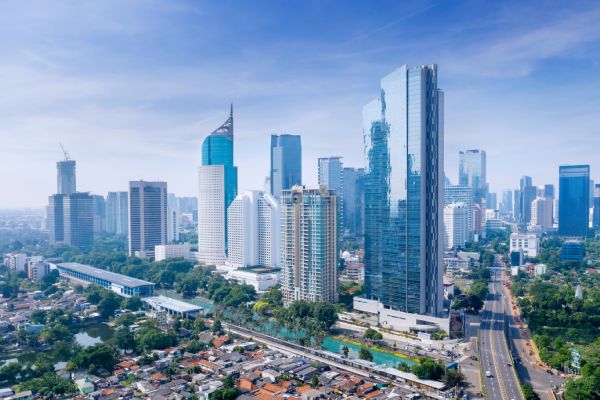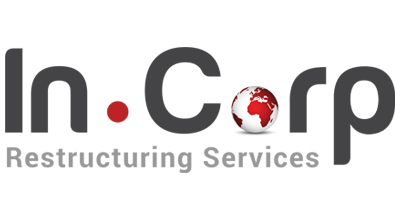Step By Step Guide to Winding Up of the Company under IBC, 2016

Step By Step Guide to Winding Up of the Company under IBC, 2016
- Last Updated
Introduction
The insolvency and Bankruptcy Code, 2016 is one of the major laws under which the winding up or voluntary liquidation of corporate persons may occur. Liquidation or Voluntary winding up of the company under IBC occurs when all the company’s board members mutually agree not to continue the business and dissolve the company of its assets and pay off the debts. Here is a detailed guide to winding up a company under IBC, 2016
Steps For Winding Up A Company Under IBC 2016
Section 59 of the IBC has laid down the procedure for step by step winding up of a company or voluntary liquidation. The Section has been summarised below to guide you through the process of winding up of a company under IBC, 2016:
Step 1: Directors/Partners of the company submit a declaration
The designated partners/majority of directors of the company have to submit a declaration along with an affidavit stating that:
- The company does not have any debts. If so, the company can settle all the debts with the proceeds of the assets sold during the liquidation process
- The winding up is not initiated to defraud any individual or a corporate person
The declaration must be annexed with the audited financial statements and record of the company’s business operations for the previous two years or since its incorporation (If it is a newly incorporated company).
Step 2: Convene a general meeting and pass a special resolution.
The designated partners are required to convene a general meeting. They pass a special resolution to
- Appoint an Insolvency Professional(IP) registered with the IBBI to act as a Liquidator
- A resolution to liquidate the company voluntarily due to expiration of time (If mentioned in the Articles of Association) or due to mutual decision by the members
Note: This must be done within Four weeks of submitting the declaration as mentioned in Step 1.
Step 3: File with the Registrar of Company (ROC) and IBBI
The Company shall then notify the ROC or the IBBI regarding the resolution passed by the board members to liquidate the company. Notification to the Board and ROC must be done within seven days of passing the resolution.
Step 4: The Liquidator takes over the company
Once the Adjudicating Authority passes an order for winding up of the company/liquidation and appoints the liquidator, the liquidator takes complete charge of the company, and the powers of the board of directors are suspended. The company shall extend full cooperation to the liquidator.
The liquidator shall proceed further to take possession of all the assets and determine their realisable value.
Step 5: Make a Public announcement and verify all the claims.
During the winding up of the company, the liquidator, after being appointed, must make a public announcement in one vernacular language newspaper and an English newspaper. Post-publication, the liquidator must consolidate all the claims received by financial (secured and unsecured) creditors, Operational creditors, workmen and employees, and other stakeholders.
The liquidator must verify all the claims and either accept or reject the same within 30 days of receiving the claim’s last date. The liquidator shall inform the claimant regarding the decision within seven days of verifying the claim.
Step 6: Prepare a list of stakeholders
As per Regulation 30[1] of the Insolvency and Bankruptcy Board of India (Voluntary Liquidation) Regulations, 2017, The Liquidator, after verifying all the claims, must prepare a list of all the stakeholders to the liquidation process based on the claims verified within 45 days from the last date of receipt of claims.
Step 7: Form an opinion on all Preferential, Undervalued, Extortionate, and Fraudulent Transactions
The liquidator at the relevant stage of liquidation/ winding up of the company must form an opinion on the avoidance transactions. The liquidator can appoint a transaction or Forensic auditor to determine the company’s Preferential, Undervalued, Extortionate, and Fraudulent Transactions.
- Post Examination of the report from the transaction auditor or forensic auditor, the liquidator must file an application with the Adjudicating Authority stating all the avoidance transactions made by the Corporate Debtor (If any)
- The liquidator must establish that the transaction made was within one year of the commencement date and two years of the commencement date in case of related party transactions
Step 8: Realisation and distribution of assets

Related Read: Navigating Corporate Restructuring in Insolvency
The liquidator may value and sell the property/assets of the corporate person in any manner approved by him. The liquidator must recover and realise all available assets at the maximum value.
The money realised from the sale of assets shall be distributed accordingly to all the stakeholders within six months of realising the amounts. The costs incurred by the liquidator during the winding up of the company/liquidation will be deducted before distributing the amounts. The distribution shall be made as per Section 53 of IBC,2016.
Step 9: Timelines for Completion of liquidation while winding up of the company
The Liquidation process must be completed within a year of the commencement of the winding up of the company/liquidation.
If the process exceeds 12 months, then the liquidator shall:
1. Convene a meeting with all the contributors/stakeholders within 15 days from the last date of winding up of the company/liquidation
2. The liquidator shall present a progress report of the current stage of the liquidation/ winding up of the company. This includes:
- Settlement List of stakeholders
- Details of properties or assets which are yet to be sold and realised
- Distribution made to the stakeholders to date
- Update on the development of any material litigations against the company (If any)
- Status of the applications filed by the liquidator before the Adjudicating Authority
3. The progress report shall be annexed with the audited accounts of all the receipts and payments made by the liquidator for and during the winding up of the company/liquidation process
Step 10: Submission of the Final report after the completion
When the company is wound up, the liquidator shall prepare and submit a final report of the process containing the following:
- Audited accounts of all the receipts and payments made by the liquidator for and during the winding up of the company/liquidation process
- A statement containing a list of all assets sold/realised and the money distributed to all the stakeholders. It should also show that there are no pending litigations against the corporate person
- An independent sale statement concerning all assets shows the realised value and the mode and method of selling the asset
- Details of the buyer to whom the assets are sold
The liquidator shall submit this final statement to the following:
- The contributors of the corporate person
- The Insolvency and Bankruptcy Board of India; and
- The Registrar
The final stage is submitting this report and an application under Section 59(7) with the Adjudicating Authority. Once the Adjudicating Authority passes the Order under IBC, the liquidator shall preserve all the records, such as reports, registers, and books of accounts, for at least eight years after the dissolution.
Conclusion
It can be concluded that the lawmaker has aimed to provide a speedy and efficient process for winding up of the companies who wish to stop their operations and realise their assets as compared to the ‘Compulsory Winding Up’ / ‘Winding Up by National Company Law Tribunal (NCLT)’ and Section 271 of the Companies Act, 2013 where there had to be strong grounds to liquidate a company. The Primary aim for winding up the company under IBC is to obtain the maximum realisable value for the assets of the company.
Some of the points to be checked before deciding upon the Law applicable are:
- Whether the entity is insolvent or solvent?
- Whether the entity has defaulted in repayment of debt(s)?
Why Choose InCorp?
With the advent of the Insolvency and Bankruptcy Code (IBC), our team actively guides financial and operational creditors through the turmoil of the non-recovery of debts and dues from defaulting entities. Our team of professionals and experts guide and advise appropriately for you to make a decision on voluntary liquidation.
Our professionals offer Corporate Recovery and Corporate Restructuring services under the framework of the Companies Act as well as the Insolvency and Bankruptcy Code.
Looking to engage with an insolvency professional?
Share
Share










































































